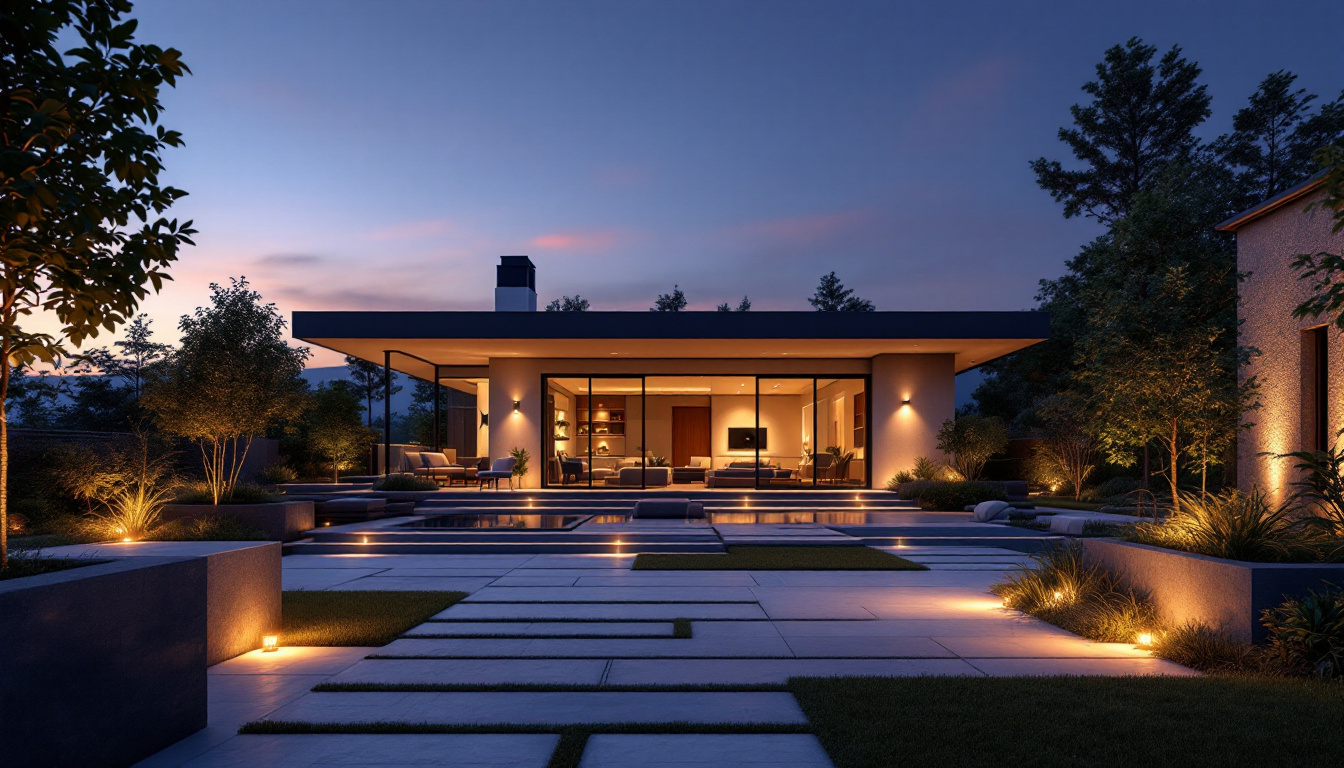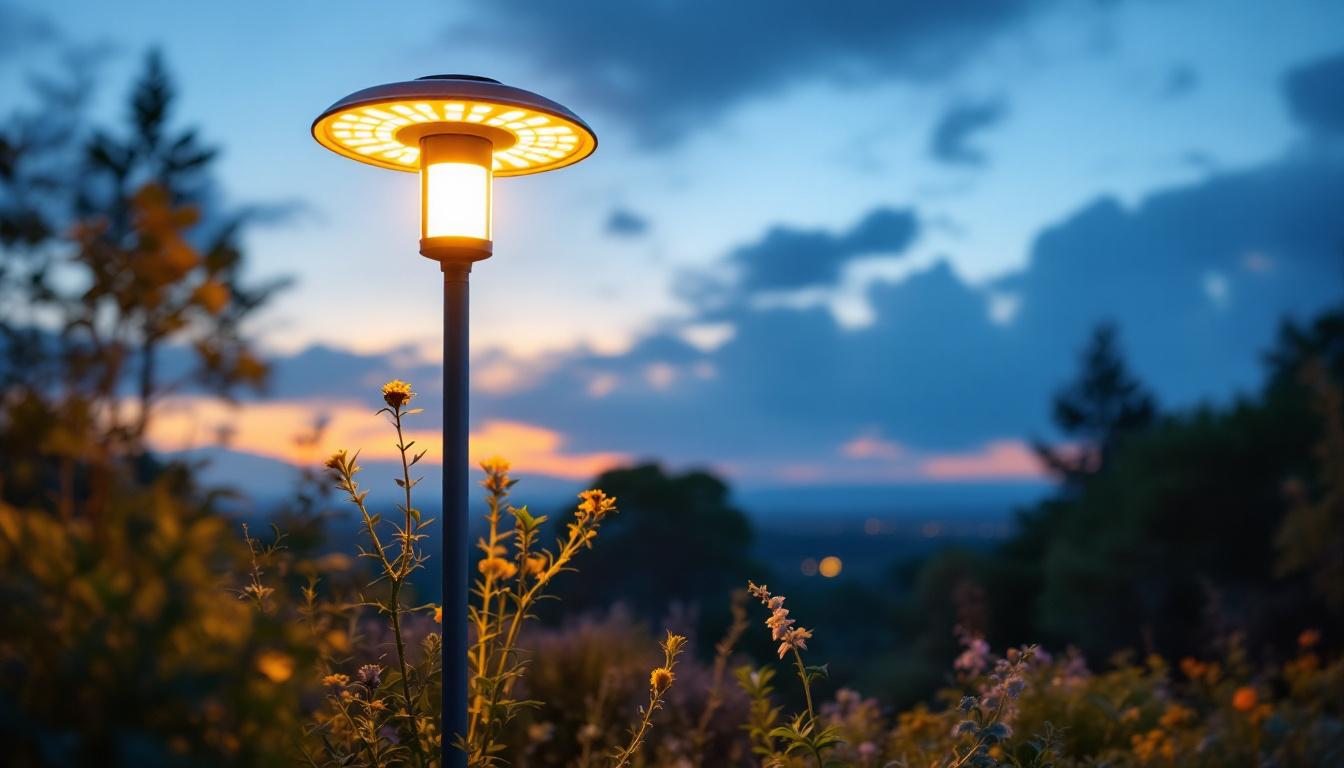
In the realm of outdoor aesthetics and functionality, modern exterior lighting has become a pivotal element for enhancing both residential and commercial properties. For lighting contractors, understanding the latest trends, technologies, and techniques is essential to meet client expectations and deliver outstanding results. This article delves into crucial insights that can help lighting contractors excel in their projects.
Exterior lighting serves multiple purposes, from enhancing security to improving the visual appeal of a property. It can transform a mundane outdoor space into an inviting environment, making it essential for contractors to grasp its significance. The right exterior lighting can also extend the usability of outdoor areas, allowing homeowners to enjoy their patios, decks, and gardens long after the sun has set. This added functionality can be particularly appealing for those who love to entertain or simply relax outside in the evenings.
Moreover, well-planned exterior lighting can increase property value and create a safer atmosphere for inhabitants and visitors alike. Clients often seek contractors who can provide innovative solutions that align with their vision while ensuring practicality and efficiency. By incorporating smart lighting technology, such as app-controlled systems or programmable timers, contractors can offer clients a modern touch that enhances convenience and adaptability in their outdoor lighting schemes.
One of the primary functions of exterior lighting is to enhance safety and security. Properly illuminated pathways, driveways, and entrances deter potential intruders and reduce the risk of accidents. Lighting contractors must consider the strategic placement of fixtures to ensure that all critical areas are well-lit. This includes not only the main entry points but also less obvious locations, such as side yards and back entrances, which are often overlooked yet can be vulnerable to security breaches.
Motion sensor lights are an excellent addition to any security lighting plan. They not only provide illumination when needed but also conserve energy by remaining off during inactive hours. This dual benefit appeals to environmentally conscious clients and those looking to reduce their energy bills. Additionally, integrating smart technology with motion sensors can allow homeowners to receive alerts on their smartphones when movement is detected, providing an extra layer of security and peace of mind.
Beyond safety, exterior lighting plays a vital role in creating ambiance. The right lighting can highlight architectural features, illuminate gardens, and create a welcoming atmosphere for outdoor gatherings. Contractors should be adept at selecting fixtures that complement the property’s design while considering the color temperature and brightness of the lights. Warm white lights can create a cozy, inviting feel, while cooler tones may lend a more modern, sleek appearance, allowing for a tailored approach to each project.
Layering different types of lighting—such as ambient, task, and accent lighting—can create depth and interest in outdoor spaces. This approach allows for versatility in design and can cater to various client preferences, making it a valuable skill for contractors to master. For instance, using string lights can add a whimsical touch to a backyard, while spotlights can draw attention to a beautifully landscaped garden or a striking water feature. By combining these elements thoughtfully, contractors can craft outdoor environments that are not only functional but also visually stunning, enhancing the overall experience for homeowners and their guests.
Staying abreast of the latest trends in exterior lighting is crucial for lighting contractors. As technology evolves and design preferences shift, understanding these trends can help contractors offer relevant solutions to their clients.
Smart lighting technology has gained immense popularity in recent years. Homeowners and businesses alike are increasingly interested in automated lighting systems that can be controlled via smartphones or voice-activated devices. This trend not only enhances convenience but also allows for customization in lighting schemes.
Lighting contractors should familiarize themselves with various smart lighting products and systems available in the market. Offering clients the option to integrate smart technology into their exterior lighting can set a contractor apart from competitors and provide added value to the service. Furthermore, smart lighting can be programmed for specific scenarios, such as dimming during movie nights or brightening when motion is detected, enhancing both security and ambiance.
With growing awareness around environmental issues, energy-efficient lighting solutions are more important than ever. LED technology has become the go-to choice for exterior lighting due to its longevity and low energy consumption. Contractors should advocate for LED installations, highlighting their benefits to clients.
Sustainability extends beyond just energy efficiency. Many clients are looking for eco-friendly lighting options that minimize environmental impact. This can include solar-powered lights or fixtures made from recycled materials. By offering sustainable solutions, contractors can appeal to a broader audience and demonstrate their commitment to responsible practices. Additionally, educating clients about the long-term cost savings associated with energy-efficient lighting can further encourage them to make environmentally conscious choices.
Modern exterior lighting designs are increasingly focused on seamless integration with the architecture of the building. This trend emphasizes the importance of choosing fixtures that complement the style and materials of the property. Contractors should work closely with architects and designers to ensure that lighting enhances the overall aesthetic rather than detracting from it.
Utilizing fixtures that blend into the landscape or architectural elements can create a cohesive look. For instance, recessed lighting in overhangs or wall-mounted fixtures that mimic the building’s design can provide a sophisticated touch. Understanding the principles of architectural integration can elevate a contractor’s work and impress clients. Moreover, incorporating elements such as ambient lighting that highlights landscaping features or pathways can enhance safety while adding a layer of visual interest to the property. By paying attention to these details, contractors can help create outdoor spaces that are not only functional but also inviting and visually striking.
While design and aesthetics are crucial, technical knowledge is equally important for lighting contractors. Understanding the fundamentals of electrical systems, fixture types, and installation techniques is essential for delivering quality work.
Before embarking on any exterior lighting project, it is vital to assess the electrical load and circuitry. Contractors must ensure that the existing electrical system can handle the additional load from new fixtures. This involves calculating wattage and understanding how to distribute it across circuits effectively.
Failure to account for electrical load can lead to flickering lights, blown fuses, or even electrical fires. Therefore, contractors should be well-versed in electrical safety standards and best practices to avoid potential hazards. Additionally, they should consider the use of energy-efficient LED fixtures, which not only reduce the overall electrical load but also have a longer lifespan compared to traditional bulbs. By incorporating smart technology, such as timers and motion sensors, contractors can further optimize energy consumption, providing clients with sustainable and cost-effective lighting solutions.
The selection and placement of fixtures can significantly impact the effectiveness of exterior lighting. Contractors should consider factors such as the purpose of the lighting, the area’s layout, and the desired aesthetic when choosing fixtures.
For instance, path lights should be spaced evenly to provide consistent illumination, while spotlights may be used to highlight specific features. Understanding the beam spread and intensity of different fixtures is crucial for achieving the desired effect. Contractors should also be mindful of glare and light pollution, ensuring that lighting is directed appropriately to minimize disruption. Furthermore, the choice of fixture materials is essential; weather-resistant and durable materials can withstand harsh environmental conditions, ensuring longevity and reducing maintenance costs. Contractors should also stay updated on the latest trends in lighting technology, such as smart lighting systems that allow for remote control and customization, enhancing both functionality and user experience.
Effective communication with clients is vital for successful project execution. Lighting contractors should strive to educate clients about their options, helping them make informed decisions that align with their needs and preferences.
Utilizing visual aids can significantly enhance client presentations. Creating mock-ups or using software to simulate lighting designs can help clients visualize the final outcome. This approach not only fosters trust but also allows for collaborative input, ensuring that the client’s vision is accurately captured.
Contractors should be prepared to explain the rationale behind their design choices, including fixture selection, placement, and energy efficiency. This level of transparency can build confidence and strengthen the contractor-client relationship.
Setting realistic expectations is crucial for client satisfaction. Contractors should provide clear timelines, budget estimates, and potential challenges that may arise during the project. By being upfront about what clients can expect, contractors can mitigate misunderstandings and foster a positive working relationship.
Regular updates throughout the project can also help manage expectations. Keeping clients informed about progress and any changes can enhance their overall experience and satisfaction with the work performed.
Modern exterior lighting is an ever-evolving field that requires lighting contractors to stay informed about the latest trends, technologies, and techniques. By understanding the importance of exterior lighting, embracing current trends, mastering technical considerations, and fostering effective communication with clients, contractors can elevate their services and deliver exceptional results.
As the demand for innovative and sustainable lighting solutions continues to grow, contractors who adapt to these changes will find themselves at the forefront of the industry. By prioritizing client satisfaction and staying ahead of the curve, lighting contractors can build a successful business that thrives in the modern landscape of exterior lighting.
Ready to take your exterior lighting projects to the next level? At LumenWholesale, we provide lighting contractors like you with the highest quality, spec-grade lighting products at prices that can’t be beaten. Say goodbye to local distributor markups and hello to a vast selection of reliable, high-performance lighting that meets the most rigorous industry standards. With the convenience of free shipping on bulk orders, you can trust that you’re getting premium lighting at the best value — all without hidden fees or compromises. Elevate your lighting game and give your clients the brilliance they deserve. Wholesale Lighting at the Best Value is just a click away.

Discover essential compliance guidelines for lighting contractors working with solar-powered lamps.

Discover essential tips and best practices for lighting contractors working with linear LED lights.

Discover essential compliance guidelines for light fixture mounts that every lighting contractor should know.

Discover innovative strategies and expert tips from lighting contractors on enhancing outdoor spaces with LED lanterns.